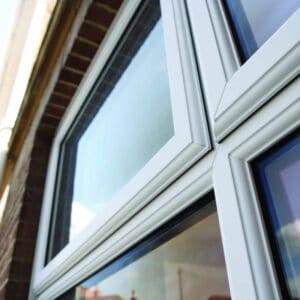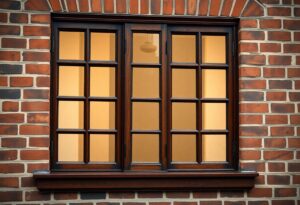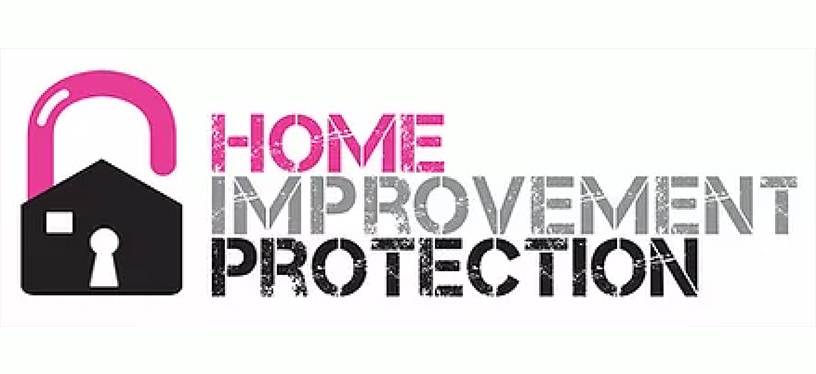Encompassing a rich history and charm, old windows are a distinctive feature of many heritage homes. However, beneath their timeless allure lies a hidden danger – lead paint hazards. The presence of lead paint in old windows poses a significant risk to the health of inhabitants, especially children, and pets. In this informative blog post, we will delve into the importance of assessing and addressing lead paint hazards in old windows. We will discuss the serious health implications of lead exposure, and provide practical guidance on how to identify and safely remove lead paint from these architectural treasures. It is essential for homeowners and renovators to be well-informed about this potential threat, and to take necessary steps to mitigate the risks associated with lead paint in old windows.
Key Takeaways:
- Lead paint hazards can pose serious health risks, particularly to young children and pregnant women.
- Old windows are a common source of lead paint hazards, as the friction caused by opening and closing the windows can create lead dust.
- It is important to assess the condition of old windows for lead paint hazards, and if necessary, address the issue by either removing, encapsulating, or replacing the windows.
- When removing lead paint from old windows, it is crucial to follow proper safety protocols to prevent lead exposure.
- Homeowners, landlords, and building managers have a responsibility to ensure that old windows with lead paint hazards are properly managed to protect the health of occupants and prevent environmental contamination.
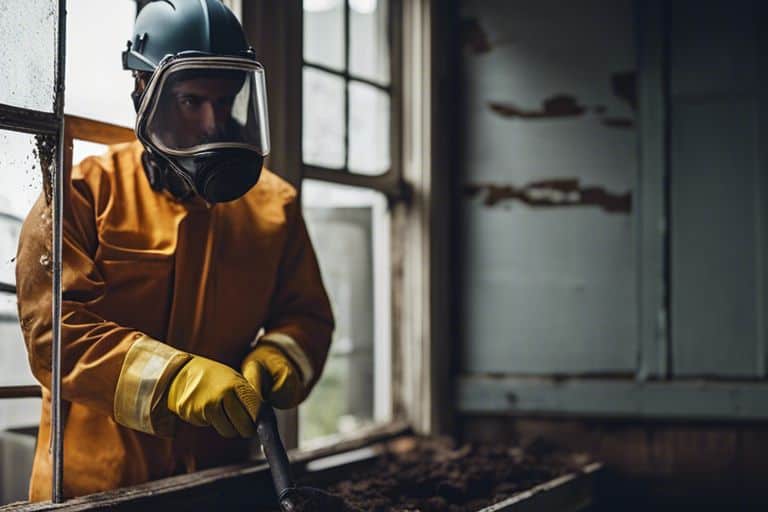
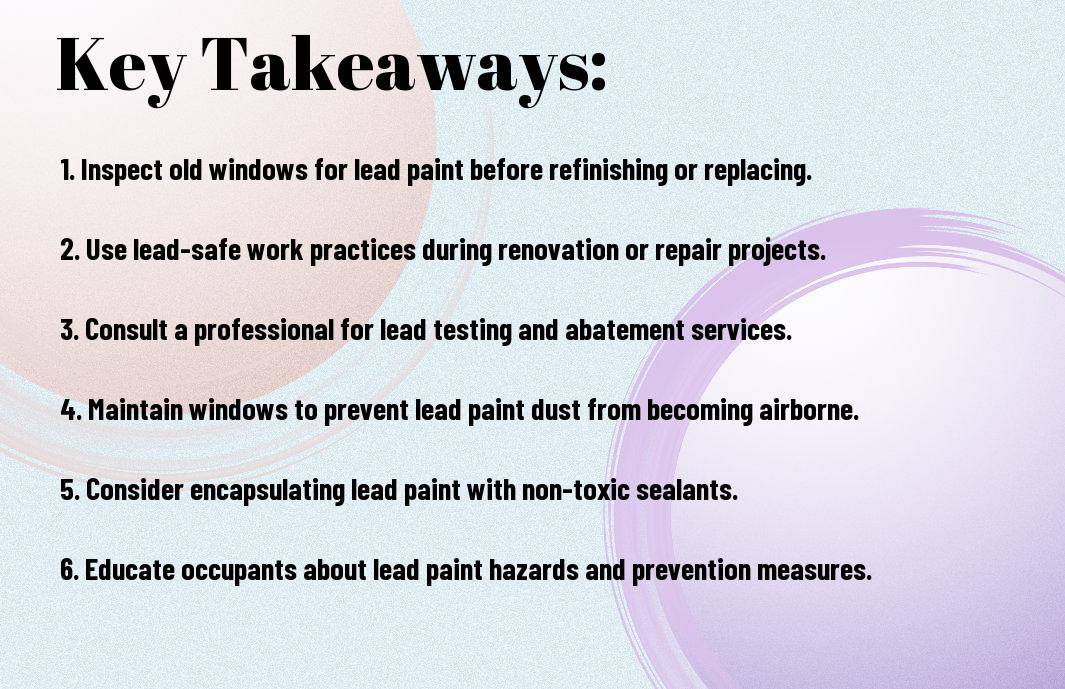
Identifying Lead Paint Hazards
Visual Inspection Techniques
Visual inspection is the first step in identifying lead paint hazards in old windows. Look for any peeling, chalking, or cracking paint, as well as dust or debris that could potentially contain lead. Use a flashlight to closely examine the window sills, frames, and sashes for any signs of deterioration. It is important to pay attention to the condition of the paint, as lead paint may be present in multiple layers of old paint.
Furthermore, check for any impact areas or friction surfaces where lead paint may have been worn down over time. These areas, such as window wells and jambs, are prone to lead dust accumulation and should be thoroughly inspected. Taking detailed notes and photographs during the visual inspection process will aid in the decision-making process for addressing any potential lead hazards.
Laboratory Testing for Lead
While visual inspection provides valuable initial information, laboratory testing for lead is the only definitive way to confirm the presence of lead in old window paint. Professional lead testing services can provide accurate results by using specialised equipment to analyse paint chips, dust, or soil samples for lead content.
Laboratory testing is crucial for determining the exact lead content and assessing the level of risk posed by the old window paint. It also helps in making informed decisions about the appropriate strategies for addressing lead paint hazards in a safe and effective manner.
It is important to note that lead testing should be carried out by certified professionals to ensure accurate results. Additionally, regular testing and monitoring of lead levels in old window paint is essential for maintaining a safe and healthy environment, especially in older buildings or homes.
Health Impacts
Lead exposure from old windows can have serious health impacts, particularly for vulnerable populations such as children and pregnant women. It is important to understand the risks associated with lead exposure and the long-term consequences for different demographics.
Risks Associated with Lead Exposure
Lead exposure can lead to a range of health issues, including neurological and developmental impairments, reduced IQ levels, and behavioural problems in children. Adults are also at risk of experiencing high blood pressure, kidney damage, and reproductive problems as a result of lead exposure. It is important to address lead paint hazards in old windows to prevent these serious health issues.
Long-term Consequences for Different Demographics
Vulnerable populations such as children and pregnant women are at a higher risk of experiencing long-term consequences from lead exposure. Children who have been exposed to lead may suffer from lifelong cognitive and behavioural problems, while pregnant women may experience complications such as miscarriage or premature birth.
The long-term consequences of lead exposure can have a significant impact on the overall well-being of the affected individuals, making it crucial to address and mitigate lead paint hazards in old windows.
Remediation Strategies
Safe Removal and Replacement Practices
When addressing lead paint hazards in old windows, Lead in Paint | Sources of Lead it is essential to use safe removal and replacement practices to minimise the risk of lead exposure. This involves taking necessary precautions such as wearing personal protective equipment, using wet methods to minimise dust, and proper disposal of lead-contaminated materials. The replacement of old windows with lead-based paint may also be necessary to ensure the safety of occupants.
Sealants and Other Containment Methods
Sealants and other containment methods can provide a practical solution for addressing lead paint hazards in old windows. The use of high-quality sealants and encapsulants can effectively contain lead-based paint, preventing it from chipping or creating lead dust. Additionally, the installation of storm windows and regular maintenance can further minimise the risk of lead exposure.
It is important to note that sealants and containment methods are a temporary measure and may require periodic monitoring and maintenance to ensure their effectiveness in preventing lead hazards.
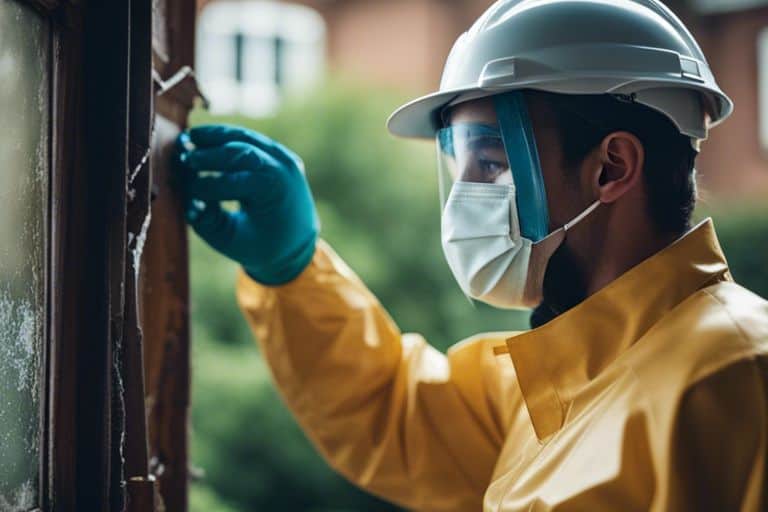
Prevention and Policy
When it comes to addressing lead paint hazards in old windows, prevention and policy play a crucial role in ensuring the safety of residents, especially young children who are more susceptible to lead poisoning. This chapter will explore the regulatory framework for lead paint and community awareness and prevention programs aimed at reducing the risks associated with lead exposure.
Regulatory Framework for Lead Paint
The regulatory framework for lead paint is essential in setting standards and guidelines for the safe handling and removal of lead-based paint in old windows. In the UK, the Control of Lead at Work Regulations 2002 sets out the legal requirements for controlling exposure to lead at work, including during the renovation, repair, and painting of old windows. This framework ensures that contractors and homeowners are aware of the risks associated with lead paint and are equipped with the necessary knowledge and protective measures to prevent lead exposure.
Community Awareness and Prevention Programs
In addition to the regulatory framework, community awareness and prevention programs are crucial in educating residents about the dangers of lead paint and providing resources for safe lead paint removal and disposal. Local councils and housing associations often provide information and support for homeowners and landlords dealing with lead paint hazards in old windows. These programs aim to empower communities to take proactive measures in addressing lead paint hazards and reducing the risk of lead exposure.
Furthermore, community awareness and prevention programs often collaborate with health professionals and environmental organisations to raise awareness about the importance of regularly inspecting and maintaining old windows to prevent lead paint hazards. By promoting regular maintenance and safe renovation practices, these programs contribute to creating lead-safe environments for residents.
Assessing and Addressing Lead Paint Hazards in Old Windows
It is imperative for homeowners and property managers to take the necessary steps to assess and address lead paint hazards in old windows. Exposure to lead paint can pose serious health risks, particularly for young children and pregnant women. By conducting a thorough assessment of old windows and implementing appropriate remediation measures, the risk of lead exposure can be significantly diminished. It is crucial to seek professional help when dealing with lead paint hazards, as improper remediation can further exacerbate the problem. Additionally, ongoing monitoring and maintenance of old windows is essential to ensure that lead paint hazards are effectively managed. Overall, addressing lead paint hazards in old windows is a critical responsibility that should not be overlooked, and can ultimately contribute to creating a safer and healthier environment for all occupants.
FAQ
Q: What are the main risks associated with lead paint hazards in old windows?
A: The main risks associated with lead paint hazards in old windows include potential lead poisoning, especially in young children, as well as the risk of lead dust being released during renovations or repairs.
Q: How can I assess if my old windows contain lead paint?
A: You can assess if your old windows contain lead paint by using a lead paint testing kit, which is easily available at hardware stores. Alternatively, you can hire a professional lead inspector to conduct a comprehensive assessment.
Q: What are the best practices for addressing lead paint hazards in old windows?
A: The best practices for addressing lead paint hazards in old windows include encapsulation, where the lead paint is sealed and contained, or complete removal by a certified lead abatement professional using safe methods.
Q: Are there any laws or regulations regarding lead paint hazards in old windows?
A: Yes, there are laws and regulations regarding lead paint hazards in old windows, including the Environmental Protection Agency’s Renovation, Repair, and Painting (RRP) Rule, which requires contractors to be trained and certified in lead-safe work practices for homes built before 1978.
Q: What are the potential health effects of lead exposure from old windows with lead paint hazards?
A: The potential health effects of lead exposure from old windows with lead paint hazards include developmental delays in children, neurological and behavioural issues, as well as kidney and cardiovascular damage in adults. It is crucial to address lead paint hazards in old windows to protect the health of occupants.





